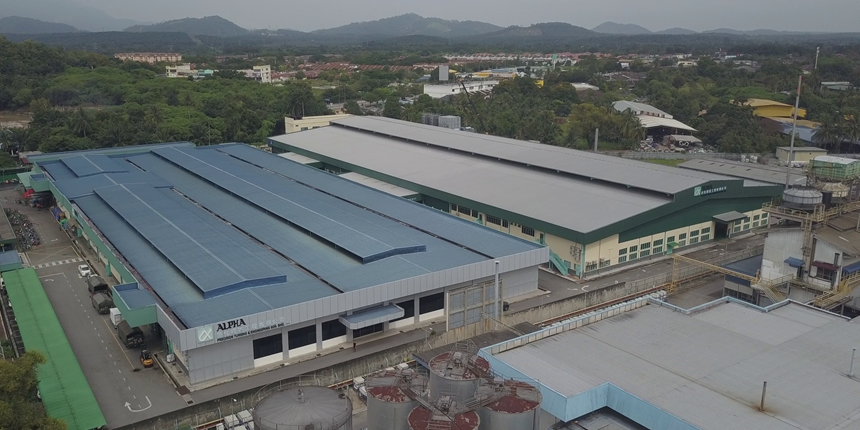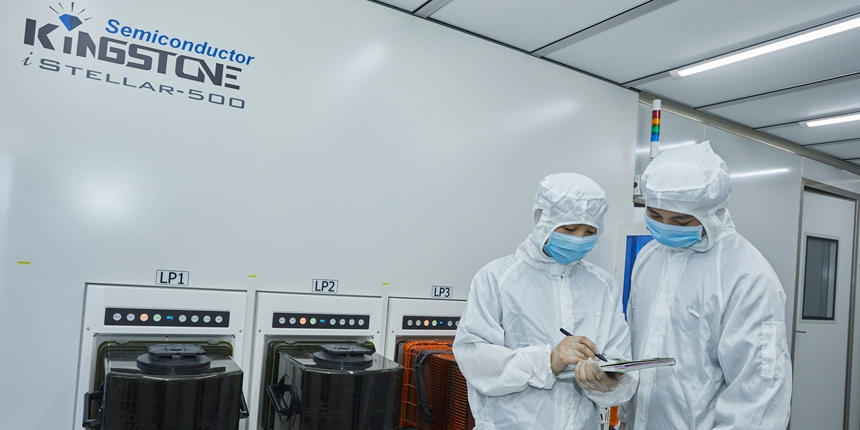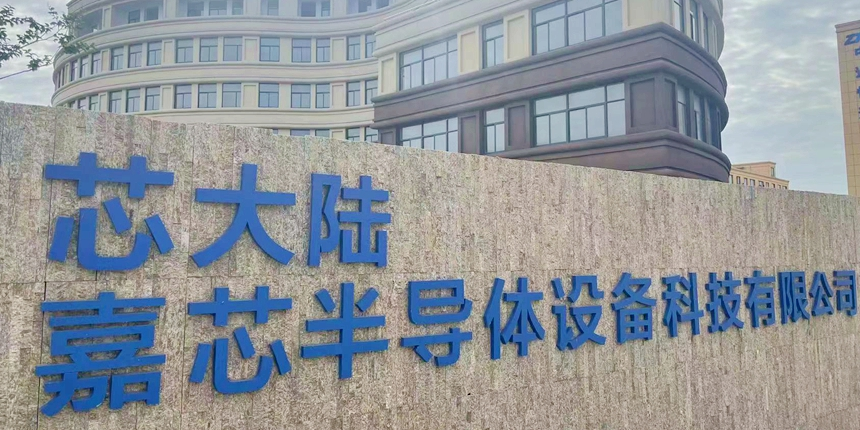On the evening of August 25, Wanye Enterprise (600641.SH) disclosed its 2022 semi-annual report. During the reporting period, the company's integrated circuit business continued to increase volume, and the revenue of integrated circuit equipment manufacturing business increased by 150.86% year-on-year. Since 2022, it has obtained nearly 1.1 billion yuan in orders for integrated circuit equipment, and has laid out a multi-category front-end equipment track.
In recent years, Wanye has continued to support the innovation and research and development of domestic equipment, and actively strategically laid out equipment and material tracks through independent research and development and epitaxial mergers and acquisitions. The company's Kaishitong is a leading domestic ion implanter R&D and manufacturing enterprise in all fields. Its business covers ion implanter equipment in integrated circuits, photovoltaics, AMOLED and other fields; its Jiaxin semiconductor business covers etching, thin film deposition, rapid heat treatment, etc. It is a core front-end equipment category; in addition, Zhejiang Compart Systems, a subsidiary of Wanye Enterprise as the largest shareholder, is the world's leading supplier of semiconductor equipment components, focusing on precision components in the field of integrated circuit flow control.
The integrated circuit business continues to increase volume, and the company's equipment purchase orders grow rapidly
From 2022 to now, Keystone and Jiaxin Semiconductor, a subsidiary of Wanye Enterprise, have received a total of nearly 1.1 billion yuan in equipment purchase orders. The company's equipment categories cover all fields of ion implanters, etching machines, rapid heat treatment, thin film deposition and other core front-end equipment.
According to estimates from the Semiconductor Industry Association International (SEMI) report, global semiconductor manufacturing equipment sales will increase by 44% year-on-year to a record high of $102.6 billion in 2021 and are expected to expand to $114 billion by 2022. At the same time, according to Jiwei Consulting, 25 12-inch wafer fabs will be added in mainland China in the next five years, with a total planned monthly production capacity of more than 1.6 million wafers, and the demand for semiconductor equipment is expected to grow rapidly in the long term.
Under this opportunity, Wanye Enterprise actively expands the market and develops customers, promotes the application of equipment in various processes and process nodes, and the synergy effect shown by the integration of the company's business system and product line is continuously expanding.
Keystone is a supplier of ion implanters in all fields and has entered a stage of rapid growth from 1 to N
Keshitong, a subsidiary of Wanye Enterprise, has profound technical advantages accumulated over the years in the field of ion implanters. High-energy ion implanters have successively passed the verification and acceptance of mainstream 12-inch integrated circuit chip manufacturers, creating a moat for core equipment products.
Figure: Keystone Low Energy Large Beam Ion Implanter iStellar-500
In the first half of 2022, the comprehensive performance of Keystone's equipment products continued to improve, and 3 integrated circuit manufacturing customers' ion implanter purchase orders were obtained, of which many ion implanter equipment products were repeated purchases and batch orders from customers. The cumulative new equipment orders exceeded 750 million yuan.
Among them, in the first quarter of 2022, Keystone won a batch order from an important customer, including a 12-inch low-energy large-beam ion implanter and a low-energy large-beam ultra-low temperature ion implanter, and signed a low-energy large-beam ion implanter with another integrated circuit manufacturer. Ion Implanter Order. In the second quarter of 2022, Keystone won an order for 3 low-energy large-beam ion implanters from the third integrated circuit manufacturing plant.
In terms of delivery capacity, Keystone has become a strategic bulk procurement supplier recognized by mainstream domestic customers. In April 2022, Keystone successfully delivered the first batch of multiple sets of low-energy large-beam ion implanters in batch orders to important customers, and subsequently achieved stable shipment and delivery on schedule. At the same time, Keystone has introduced a number of senior ion implantation process experts and R&D teams who have worked in chip manufacturing plants for many years to further improve the timely response to customer needs and service quality.
At present, Keshitong, a subsidiary of Wanye Enterprise, has established a stable supplier cooperation system by establishing good cooperative relations with core component suppliers, and has taken a leading position in the domestic ion implantation industry. It has entered the stage of 0-1. 1-N high-speed growth stage.
The multi-category breakthrough of Jiaxin semiconductor equipment, the "1+N" equipment platform effect is gradually highlighted
At present, integrated circuit fabs are ushering in a new wave of expansion. Integrated circuit equipment has become a continuous growth point in the market, and equipment manufacturers have ushered in an opportunity for accelerated growth. Wanye Enterprise is gradually expanding the market scale with the development strategy of "1+N" equipment diversification.
After the official operation in the fourth quarter of 2021, Jiaxin Semiconductor, a subsidiary of Wanye Enterprise, has obtained orders for various types of equipment such as film deposition, heat treatment, and etching. The cumulative amount of new orders exceeds 340 million yuan, including rapid thermal processing (RTP), nitriding Silicon plasma etching machine, metal plasma etching machine, sidewall plasma etching machine, high-density plasma film deposition and silicon dioxide plasma film deposition and other equipment. According to Gartner statistics, in 2021, global etching equipment, thin film deposition and heat treatment equipment will account for about 21.59%, 19.19% and 3% of the value of wafer manufacturing equipment, respectively.
Figure: Jiaxin Semiconductor Equipment Technology Co., Ltd.
Since its establishment in 2021, Jiaxin Semiconductor has rented workshops for R&D and manufacturing of equipment. The products will cover 8-inch and 12-inch equipment in the fields of etching machines, rapid heat treatment/defiring, and thin film deposition. In the same year, it won the bid for Jiashan County, Zhejiang Province. 109 acres of state-owned construction land use rights. At present, the R&D and manufacturing base of Jiaxin Semiconductor is under construction. After the production capacity is released, it will continue to promote the high-quality development of the company's "1+N" integrated circuit equipment platform.
"Extended M&A + Industrial Integration", the platform layout of equipment and materials has reached a new level
Compart Systems, a subsidiary of Zhejiang Praseodymium, a subsidiary of Wanye Enterprise, is one of the few companies in the world that can complete all aspects of precision machining of components in the field of integrated circuits. It provides one-stop processing services from component raw materials to component assembly, with strong technical strength. Long-term service for many world-renowned integrated circuit equipment customers and stable supply relationship. In semiconductor equipment manufacturing, the key components can be roughly divided into 5 categories, including vacuum pump, RF power supply, silicon wafer transfer, gas and liquid control, etc. Compart is one of the most core gas flow control system suppliers. Compart Systems is committed to continuing to develop the domestic market. During the reporting period, its related products entered the supply chain of another top global semiconductor equipment company, and it is expected to release more orders in the second half of the year. In the first half of 2022, Zhejiang Praseodymium Core's operating income was 504 million yuan, a year-on-year increase of 13.83%.

Photo: Compart Systems Malaysia Alpha Factory
At present, Wanye has expanded from the leading all-field ion implanter to the front-end equipment track of more categories. The "1+N" strategy of the semiconductor equipment platform has gradually emerged. In line with the strategic layout of the upstream equipment parts field, it will continue to Give full play to the potential of ecological synergy and contribute to enhancing the stability and competitiveness of the domestic semiconductor equipment industry chain.
With the deepening of localization, local equipment manufacturers will usher in a broad space for growth. Wanye Enterprise is committed to becoming a new engine to promote the high-quality development of the integrated circuit industry. By increasing investment in research and development, we will continue to expand equipment categories, promote strategic cooperation with customers, accelerate product delivery, gradually release business performance, and welcome the rapid growth period. The golden wave of localization of integrated circuits has helped the industry to leap forward.



